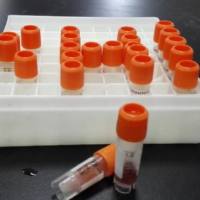Fluorescence In Situ Hybridization (FISH) to Metaphase and Interphase Chromosomes
互联网
635
The unambiguous identification of human chromosomes became possible with the discovery and implementation of G-banding techniques (1 ). Almost immediately, investigators developed various methods to physically map specific DNA sequences to banded chromosomes. A commonly used early technique involved the hybridization in situ of radioactively labeled probes to heat-denatured human metaphase chromosomes (reviewed in 2 ). These techniques were efficient, yet costly, time-consuming, and technically difficult. Isotopic hybridization in situ was rapidly superseded by nonisotopic techniques—especially those utilizing fluorescently labeled probes (3 –6 ). This chapter describes basic methodology for the accomplishment of metaphase and interphase fluorescence in situ hybridization (FISH).








